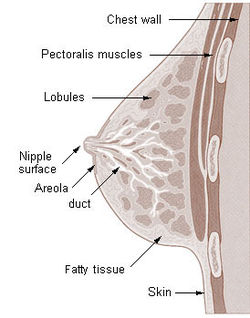First off, what do all those color combinations mean?
Put simply, the above color combinations are the flags of the LGBTQIA community. The most common flag associated with this community is the rainbow flag (left), though because many feel it to only designates gay and lesbian folks, other communities created flags with their own unique color combinations.
This flag represents bisexuality. These are people who feel romantic and/or sexual attraction to two genders. I have worked with many bisexual folks, and while it is not always relevant when they're in a heterosexual relationship, my clients feel they can comfortably disclose this intimate detail about themselves if they are aware that I am an LGBTQIA-friendly provider.
This flag represents the transgender community. A transgender person is a person whose gender differs from the gender they were assigned at birth. For example, a trans man may have been "DFAB", or designated female at birth. Many trans men can become pregnant and some choose to do so. Some nurse their babies and others choose not to or cannot. I am proud to be in a growing community of birth and lactation professionals that have educated ourselves on helping transgender folks meet their infant feeding goals.
This flag represents the genderqueer and non-binary community. Some folks do not identify with a specific gender, or their gender does not fit the typical man/woman binary. Non-binary folks often use gender neutral pronouns such as they/them. Many can become pregnant and give birth, so being knowledgeable about this community is a must for an inclusive birth and breastfeeding professional.
Speaking of non-binary folks, a pansexual is a person who experiences attraction to all genders. They dislike the term "bisexual" because of the implication that there are more than two genders. Again, this is not always a relevant issue for birth workers, but this community is important to include in your awareness base!
An intersex person is a person born with reproductive or sexual characteristics that do not fit the traditional male/female binary. Contrary to popular misconception, most intersex people are able to become pregnant, though modification surgeries to "assign" a sex during infancy often interferes with future fertility. Many if not most intersex people resent this cosmetic modification because they were not given a choice in the matter.
Asexuals are people who do not experience sexual attraction, or experience it very selectively. Many asexual people experience romantic attraction, and therefore do become pregnant and start families with the people they love.
The final flag is the only one that doesn't really "fit" in the LGBTQIA acronym, though it's relevant to doulas. Non-monogamous folks (also called polyamorous) have multiple romantic relationships with the knowledge and consent of everyone involved. A doula very often becomes acquainted with the intimate details of their clients lives, so being aware of diverse relationship dynamics is important. Especially if your client will be accompanied by more than one romantic partner!
In other words, this graphic is meant to signify that I have a great love and respect for diversity! Because no two families look alike, it is important to me to designate myself as an inclusive doula and lactation consultant. Indeed, I enjoy working with pregnant folks and their families regardless of sexuality, gender, or family structure. Additionally, I am committed to being aware and knowledgeable of the unique issues affecting each community.
For those who have asked, yes you are more than welcome to use the above graphic on your business page! I only ask that you educate yourself about each community and know that being an "inclusive provider" means committing to a lifetime of learning and never making assumptions. The experience of one person is not the experience of everyone within that demographic. The best practice is to listen first and echo language. If you're unsure, just ask! A few examples of questions you might ask:
- "What are your pronouns?" (Don't assume based on how someone looks or sounds.)
- "How should I refer to you nursing your baby?" (If you're working with a trans man, he might use "chestfeeding" or simply "nursing" instead of "breastfeeding.")
- "How should I refer to your partner?" (This goes for everyone! Just because someone is married doesn't mean they use terms like husband or wife.)
The Next Family - The leading resource for gay parents, single parents, and city dwellers
World Professional Association for Transgender Health
Milk Junkies - Breastfeeding and parenting from a transgender perspective
Professional Organizations on LGBT Parenting - HRC
More than Two - Resource for non-monogamous families
And a few for your LGBTQIA clients and their families:
Find an LGBTQ Care Provider - Breastfeeding Network
Overview of Lesbian and Gay Parenting, Adoption, and Foster Care - ACLU
Trans Parenting Support Group - Web-based community
Family Resources - Family Equality Council
The Basics of Inducing Lactation - Breastfeeding without Birthing
Breastfeeding Inc - Resources from lactation specialist and LGBTQIA ally Dr. Jack Newman
Peaceful Beginnings of the Triad* - Inclusive clinical lactation support for all kinds of families in the Piedmont Triad of NC
*Full disclosure: I am one of the lactation consultants at Peaceful Beginnings.










